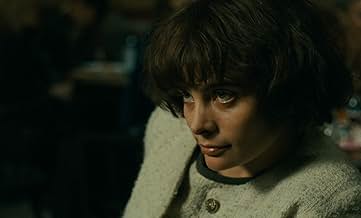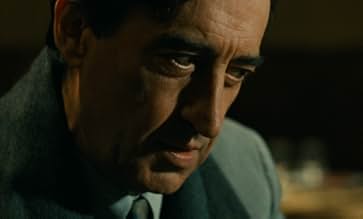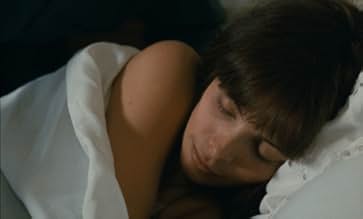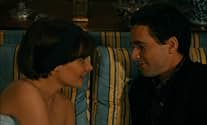Adicionar um enredo no seu idiomaA drunken self-destructive woman called Betty wanders through bars and meets a man that drives her to a restaurant outside Paris called Le Trou (The Hole). She meets the middle-aged alcoholi... Ler tudoA drunken self-destructive woman called Betty wanders through bars and meets a man that drives her to a restaurant outside Paris called Le Trou (The Hole). She meets the middle-aged alcoholic Laure from Lyon, who is the lover of the Le Trou's owner Mario. Laure decides to take ca... Ler tudoA drunken self-destructive woman called Betty wanders through bars and meets a man that drives her to a restaurant outside Paris called Le Trou (The Hole). She meets the middle-aged alcoholic Laure from Lyon, who is the lover of the Le Trou's owner Mario. Laure decides to take care of Betty and brings her to the room next-door in her hotel. Along the days, Betty tells... Ler tudo
- Direção
- Roteiristas
- Artistas
- Prêmios
- 1 vitória no total
Avaliações em destaque
So, after three failures on the trot, Chabrol turned to one of his favorite novelists, Georges Simenon hoping to find some help to boost his career again and he found it with the novel "Betty". He was so much taken with this novel that he decided to transfer it to the screen. It wasn't one of Simenon's most well-known novels but a commendable one all the same and it's easy to understand why Chabrol liked this novel so much. It assesses the portrait of an immoral woman who got a raw deal. She's like a driftwood in the throes of a river full of undertows and unbalanced by unfortunate events. A heartless mother who sent her to live with her aunt when she was young. The day she discovered her uncle having sex with a teenage girl, a loveless marriage in a bourgeois milieu whose members especially considered her as an object pregnancy so that the Etamble descendants could be assured, a scandal which obliged her to break with her upper-class family and her children. In Chabrol's work all these events are related as flashbacks and at the outset of the film, Betty is a complete drifter, wanders from café to café, is often on booze and fags (she spends a good half of the film with cigarettes and alcohol near her). In a rather sleazy bar, she's rescued by a rich widow, Laure (Stéphane Audran) who befriends with her. She also seems to be a woman with a heavy past behind her and searching for human warmth...
As Marie Trintignant once put it: "Chabrol likes these monstrous women who do terrible things with a total innocence". With this noteworthy opinion and the contents of the film, "Betty" is easy to locate in Chabrol's bushy filmography. One could regard it as the female cousin of "Violette Nozières" (1978), "une Affaire De Femmes" (1988) and "la Cérémonie" (1995). Without losing the thread of the plot, Chabrol unveils to the audience, key-elements in Betty's life which might have been watershed ones in the construction and the solidification of her numb and a little unfathomable persona. Chabrol was right not to give us available, direct solutions or weak possibilities to explain her actions and so his enigmatic heroine keeps all her mystery. To better emphasize her elusive character, the filmmaker bestowed his directing with deft, shrewd ideas. For instance, when Laure begins to speak about Mario her lover or herself, Betty doesn't appear to listen to her, she's completely immersed in her bitter memories and so, during Laure's words, the camera takes us in another time, another place like a dinner in her former bourgeois family. This kind of brainy idea tells a lot about the type of character that is Betty and also gives an inkling to the audience about her mind in disarray. And I particularly relish the very last shot which showcases her behind an aquarium whose water is unclear. It's self-explanatory...
"Betty" also provided to Chabrol another god-sent opportunity to deliver one more scathing attack on the upper-class milieu given that Betty's bourgeois family has a part of responsibility in her fall.
The two central performances command admiration and respect. Marie Trintignant and Stéphane Audran completely mesh together with easiness. For the latter, it would be the very last time she acted in a film made by her ex husband.
A compelling writing of the characters, a painstaking construction and the big efforts Chabrol put in this story of an ambiguous woman make "Betty" a real winner amid his uneven filmography. Unfortunately, his adaptations from Simenon didn't put the critics and the public on the same wavelength since the film had a fleeting life in the French theaters in spite of glowing reviews. The same mishap happened ten years ago with "les Fantômes Du Chapelier" (1982), another Simenon adaptation, inferior to "Betty". But never mind, in 1992 Chabrol found again his high artistic potential and the level will maintain itself with his two following works: the divine "l'Enfer" (1994) and "la Cérémonie" (1995).
Actually, the source novel for it was the handiwork of celebrated pulp writer Georges Simenon and Chabrol's film version is buoyed by a spunky central performance from the ill-fated Marie Trintagnant (the daughter of actor Jean-Louis and director Nadine, she died in 2003 aged 41 from a cerebral haemorrhage, following a beating-up by her live-in boyfriend!) and a quietly mature one by Chabrol's former wife and frequent muse Stephane Audran.
The title character is a woman who, marrying above her station, is subsequently thrown out of her house after she gives in to her baser instincts; as a result, she takes to an aimless existence on the streets, drinking and chain-smoking her nights away in the company of strangers. Thankfully, she is picked up from the gutter by an enigmatic middle-aged woman (with a much younger companion) who installs her into her own lavish apartment and gradually helps her pick up the pieces of her broken-down life. But the innately sensuous qualities of the waif-like Betty soon catch the attention of her benefactor's boyfriend and, perhaps inevitably, tragic circumstances ensue.
The low-key qualities of BETTY are countered by Chabrol's decision to structure his film as a complex maze of flashbacks which depict (and contrast) the stuffy, ordered, aristocratic lifestyle the protagonist suffered through in her married past, versus her new, chaotic but free-spirited present state. All in all, therefore, the film can be counted as yet another feather in Chabrol's prolific and largely consistent cap.
The story begins with Betty on a date with a psychotic ex-doctor and she's becoming drunk VERY fast (I can't recall EVER seeing a character in a movie drink that many drinks so fast). When she awakens she's in the home of an older woman who has rescued her. And, slowly in flashbacks, we see Betty's story about her life--given in bits and pieces interspersed throughout the film. There were two problems with this method: first, it was, at times, pretty confusing following the action, and second, I just found myself not particularly caring about the character. She was a total mess.
It's a shame, as I have really enjoyed several other Claude Chabrol movies--this, unfortunately, isn't one of them. It only scores a 4 because the acting is good--the story sure isn't.
Você sabia?
- CuriosidadesThe last film that director Claude Chabrol and his former spouse Stéphane Audran made together.
- ConexõesFeatured in Antenne 2 - Le journal de 20H: Episode dated 16 February 1992 (1992)
- Trilhas sonorasJe Voulais te Dire que je t'Attends
Lyrics by Michel Jonasz and Pierre Grosz
Music by Michel Jonasz
Performed by Michel Jonasz
Principais escolhas
- How long is Betty?Fornecido pela Alexa
Detalhes
Bilheteria
- Faturamento bruto nos EUA e Canadá
- US$ 58.099
- Fim de semana de estreia nos EUA e Canadá
- US$ 5.243
- 22 de ago. de 1993
- Faturamento bruto mundial
- US$ 58.099
- Tempo de duração
- 1 h 43 min(103 min)
- Mixagem de som
- Proporção
- 1.66 : 1

















